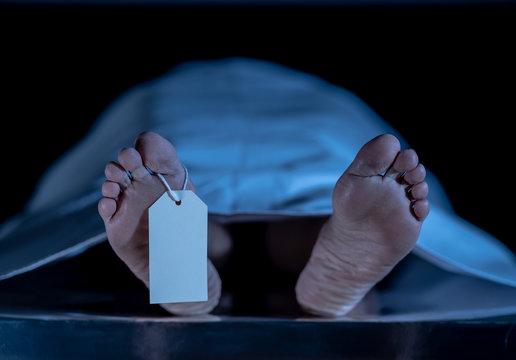What Happens During Post-Mortem: Introduction
What happens during post-mortem is a question many people ask, especially when someone passes away unexpectedly. A post-mortem, also known as an autopsy, is a detailed medical examination of a body after death. It is performed by trained doctors to determine the exact cause of death and to understand how the body was affected before the person died.
Post-mortems are carried out by special doctors called forensic pathologists, and the entire process is done scientifically and respectfully. Whether the death occurred naturally, in an accident, or due to unknown causes, knowing what happens during post-mortem helps bring clarity to families, doctors, and sometimes even the police.
Let us now explore every step and detail of what happens during post-mortem, explained in a way that both students and adults can understand clearly.
Importance of Knowing What Happens During Post-Mortem
Before explaining the process, it is important to understand why post-mortems are done. The purpose is not only medical but also legal and social. Knowing what happens during post-mortem helps answer many important questions:
- What caused the death?
- Was it due to natural illness, an accident, or something criminal?
- Could the death have been prevented?
- Is the death linked to a disease that others should be aware of?
Sometimes, people think post-mortem is something scary. But actually, it is a helpful medical investigation that gives peace of mind to families and helps justice and science.
When is a Post-Mortem Required?
A post-mortem is not done for every death. It is required only in certain cases. Understanding what happens during post-mortem starts with knowing when and why it is done. These are some common reasons:
- Sudden or unexplained death
- Suspicion of crime, suicide, or foul play
- Accidents, burns, or unnatural injuries
- Deaths during medical procedures
- Unknown cause of death at home or in hospital
- Legal or insurance purposes
- Public health concerns, such as disease outbreaks
Doctors or police may order a post-mortem based on the circumstances. In some cases, family members also request it if they want to know more about the cause of death.
Who Performs the Post-Mortem and Where It Happens
In India and most countries, post-mortems are conducted by trained forensic pathologists or government medical officers in a mortuary. These places are different from regular hospital wards. They are specially built for the respectful and scientific examination of bodies.
The doctor works with trained staff including lab technicians and police officials, especially in forensic cases. Only authorized persons are allowed inside the post-mortem room. Family members usually wait outside and are informed after the process is complete.

Step-by-Step: What Happens During Post-Mortem Examination
To fully understand what happens during post-mortem, let us go through the steps in order. The process usually follows strict medical guidelines and legal rules.
Step 1: Identification and Preparation
- The body is brought to the mortuary, usually in a sealed bag.
- An officer or hospital staff confirms the person’s identity using a tag or document.
- The body is placed on a special post-mortem table, and the time and date of arrival are recorded.
- A case number is assigned for record-keeping.
In some cases, fingerprints, dental records, or DNA samples are taken to confirm identity.
Step 2: External Examination
This is the first step in the examination. The pathologist carefully checks the outside of the body to look for any clues:
- Skin color, rashes, injuries, or bruises
- Wounds, cuts, burns, or needle marks
- Presence of any fluids around the mouth, nose, or ears
- Length, weight, age, and other physical features
- Condition of the clothes, if any
- Presence of medical devices like pacemakers
Photos are taken for documentation, especially in legal or forensic cases.
Step 3: Internal Examination
This step helps the doctor to see what was happening inside the body at the time of death. The pathologist makes careful incisions and examines all major organs.
- Chest and abdomen are opened to examine the heart, lungs, stomach, liver, kidneys, intestines, and spleen.
- Brain examination is done by opening the skull.
- All organs are checked for size, color, damage, and signs of disease.
- Organs may be removed and weighed, then examined for abnormalities.
This part is very important in understanding the real cause of death, especially if it is due to heart attack, stroke, poisoning, or internal injury.
Step 4: Collection of Samples
During internal examination, small pieces of tissues and fluids are collected for lab testing. These may include:
- Blood and urine samples
- Tissues from liver, kidney, or lungs
- Contents of the stomach (to check for poison or food)
- Bone or hair samples in special cases
These samples are sent to laboratories for toxicology, histopathology, and microbiology tests. These help confirm if any disease, drug, infection, or toxin caused death.
Step 5: Completion of the Report
After the examination, the doctor writes a post-mortem report. This report is a legal document and includes:
- Personal details of the deceased
- Time, place, and condition of the body
- Visible injuries or disease signs
- Findings from organ and sample examination
- Probable cause of death
- Manner of death (natural, accidental, suicidal, or homicidal)
If lab test results are awaited, the report may mention that the cause of death is “reserved pending results.”
Step 6: Stitching and Cleaning the Body
Once the examination is completed, the body is carefully stitched and cleaned. It is then placed in a clean cover or coffin and handed back to the family for funeral or cremation.
Doctors and staff maintain respect and dignity throughout the process. Religious beliefs and cultural customs are respected whenever possible.
What Happens During Post-Mortem in Legal and Police Cases
In cases involving crime, accident, or unknown persons, the police are directly involved. Here’s what happens during post-mortem in such cases:
- The body is sent with a police request letter.
- A Magisterial or Inquest report is attached.
- The post-mortem is conducted under police supervision.
- The report becomes evidence in court.
- Chain of custody is maintained for any collected evidence.
Sometimes, if the death is part of a suspicious event, samples are stored for many years in case of future investigation.
Emotional and Social Understanding of What Happens During Post-Mortem
It is natural for families to feel emotional or uncomfortable about post-mortem. But it is important to know:
- The person does not feel pain during post-mortem.
- The process is done with care and professionalism.
- It helps in giving closure to the family.
- It can save lives by detecting hereditary or infectious diseases.
- It supports the justice system and helps solve cases.
Understanding what happens during post-mortem helps remove fear, myths, and wrong ideas that people may have due to films or rumors.
Is Consent Required for Post-Mortem?
There are two types of post-mortems:
- Medicolegal Post-Mortem
- Ordered by the police or magistrate
- Consent of the family is not needed
- Done in criminal or suspicious cases
- Clinical or Hospital Post-Mortem
- Done for academic or medical research
- Family consent is required
- Helps understand diseases better
How Long Does a Post-Mortem Take?
- Basic post-mortem: 2 to 4 hours
- Full report with lab tests: 1 to 3 weeks
- In urgent cases, preliminary cause can be shared within hours
Conclusion: Why It is Important to Know What Happens During Post-Mortem
Learning what happens during post-mortem gives us a deep understanding of how science helps us even after death. It answers difficult questions and provides peace to grieving families. It helps the police and courts do their job, and doctors learn more about diseases.
For both young students and adults, knowing what happens during post-mortem teaches respect for life, death, and the value of truth. It is not a scary topic but an important part of modern medicine and justice.
Frequently Asked Questions (FAQ) on What Happens During Post-Mortem
1. What is a post-mortem?
A post-mortem is a medical examination of a body after death. It helps doctors find out the exact cause of death and check if there were any diseases, injuries, or harmful substances in the body.
2. Why is a post-mortem done?
A post-mortem is done to:
- Find the cause of death
- Discover signs of illness or injury
- Help in police investigations
- Provide information for medical studies
- Give peace of mind to the family
3. Who performs a post-mortem?
A forensic pathologist, who is a specially trained medical doctor, performs the post-mortem. They are experts in examining dead bodies to find the cause of death.
4. What happens during post-mortem examination?
During post-mortem, doctors:
- Examine the outside of the body
- Open the body to look at internal organs
- Take samples for lab testing
- Write a report about the findings
- Clean and stitch the body before returning it to the family
5. Is post-mortem painful for the dead person?
No, the dead person does not feel any pain during the post-mortem. The body is examined with respect and care, and the process is handled professionally.
6. Where does a post-mortem take place?
A post-mortem takes place in a mortuary or post-mortem room in a hospital or medical college. It is a clean and controlled environment meant for this purpose.
7. How long does a post-mortem take?
- A basic post-mortem takes about 2 to 4 hours.
- If lab tests are needed, the final report may take a few days or weeks.
8. Can family members be present during post-mortem?
No. Family members are not allowed to watch the post-mortem. Only doctors, authorized staff, and sometimes police are allowed inside the post-mortem room.
9. What happens during post-mortem in criminal cases?
In criminal cases (like murder or suspicious deaths):
- The police request the post-mortem
- The body is examined under legal supervision
- The report is used as evidence in court
10. Is family permission needed for a post-mortem?
It depends:
- Legal (medico-legal) post-mortems do not need family permission.
- Hospital or research post-mortems need family consent.
11. What happens to the body after post-mortem?
After the examination, the body is cleaned, stitched, and returned to the family. They can then perform funeral or cremation rituals.
12. Can a post-mortem reveal if someone was poisoned?
Yes. If poisoning is suspected, doctors collect body fluids and tissues during the post-mortem. These are tested in a laboratory to detect any harmful substances.
13. Are post-mortems common?
Post-mortems are not done for every death. They are done only when the cause of death is unknown, suspicious, or when requested by law or for research.
14. What is a forensic post-mortem?
A forensic post-mortem is a detailed examination done when the death involves a crime or legal issue. It helps collect evidence and support police investigations.
15. Can post-mortem help in future medical research?
Yes. When permitted, post-mortems can help scientists understand diseases better, improve treatments, and save future lives.



